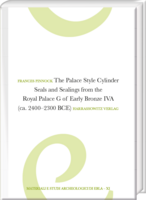|
|
more titles of the subject:
Download:
Please note: With adding digital Products to your cart
the payment will be handled via PayPal. The download will be provided after the payment is confirmed. This volume is the 11th in the series Materiali e Studi Archeologici di Ebla, edited by the Italian archaeological expedition to Ebla to publish the final reports on the materials and architecture of this significant site. The volume presents the cylinder seals and clay sealings of mature Early Syrian Ebla (ca. 2400–2300 BC), along with an outline of the topographic setting of the materials and a discussion of their chronology.
The individual characters and motifs used are examined in detail, as are the reconstructed figurative patterns. Almost 200 sealings and three cylinder seals were found. The study of the seal samples sought to identify the officials who used them, some of whom had their names inscribed on the seals, but not their function: to this aim, the analysis of the contemporary written testimonies of the cuneiform tablets from the State Archives provided useful information, which is analyzed in detail in a specific appendix by L. Verderame. A comparison is also made between the Eblaic seals and the contemporary glyptic of Syria and Mesopotamia. Eblaic glyptic is certainly influenced by Mesopotamian glyptic of the Early Dynastic II/III period, but shows great originality in the use of the motif of the Contest of Animals; original characters were also created by the Eblaic palace workshops, including the king and queen and divine figures such as Ishkhara. The analysis allowed the identification of some of the containers used. Based on this information, combined with the evidence for the officials identified with certainty, proposals are made about the storage habits in the Royal Palace G of Ebla. |
|||||||||||||||||||||||||||||||||||||||






